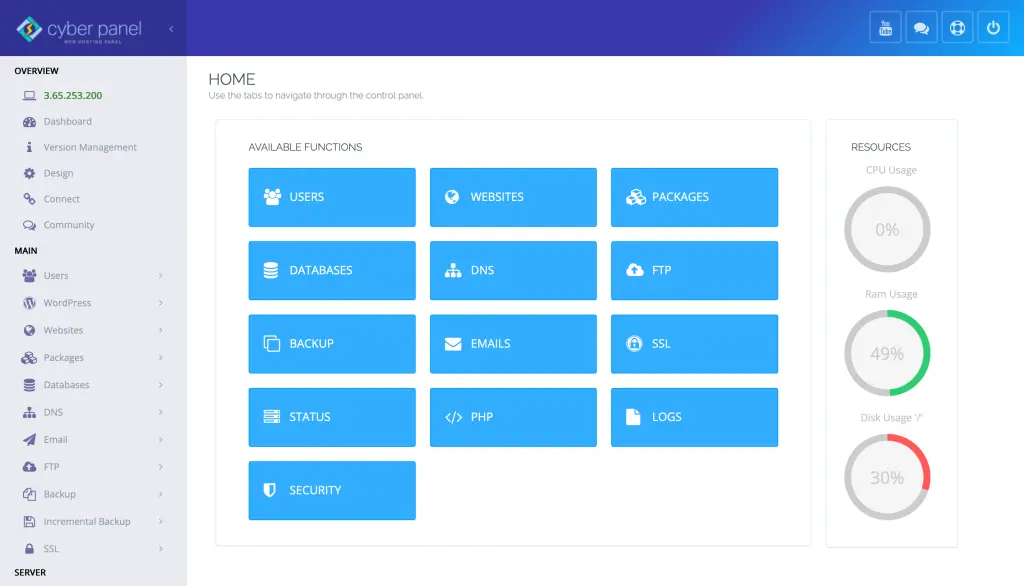If the need arises for you to display the results of a command in Linux but still need to capture the output, then you need to use the tee command in Linux. The tee command splits the output of a command such that it is displayed on the screen and saved in a file at the same time. The Linux command tee is useful when one is writing logs, performing data analysis, or attempting to resolve issues. But how do you maximally leverage this command in your workflow?
In this guide, we shall examine the range of possibilities that can be achieved with keyword tee in Linux. We will also review some practical Linux command tee examples and discuss how to best use this splendid tool. From novices to seasoned Linux users, knowing how to efficiently use tee will certainly boost your productivity.
Now, let’s walk you through the intricacies of the tee command in Linux and appreciate the differences in your workflow.
What is the tee command in Linux?
The tee command in Linux is an application that accepts an input stream and documents it both in a specific file and outputs it to the screen at the same time. It is a highly efficient tool when you want to see the output of a command while also saving it for purposes like logging or backup.
Why use the tee command in Linux?
Here are a few things that should make you want to use the tee command Linux:
- Recording multiple command outputs: The tee command Linux offers you the chance to record the outcome of any commands while still retaining a visual on your terminal.
- Log writing in progress: While observing system activities or logs, tee can display the collected data on the screen as well as write it down on one of the documents.
- Data replication: The output of a command can be sent to several places (files and the terminal) simultaneously, making sure you have copies and records of your work.
With Linux command tee, you can work more efficiently capture all that is necessary, and never miss out on anything important.
Get exclusive access to all things tech-savvy, and be the first to receive
the latest updates directly in your inbox.
How to use the Tee Command in Linux
1. Basic Usage of the Tee Command
The tee command allows you to output information to both a file and the terminal at the same time. For example:
echo Hello World, "Hello, World!" | tee output.txtAs you can see, the command above will both display, “Hello World” on the terminal and save the same output to a new file, output.txt. In this case, the output of the command is being split to display on the computer screen and a file, which is the core capability of the Linux tee command.
2. Appending Data to a File Using tee
By default, tee overwrites the specified file set with new content, however, sometimes, you may want to append new data to the set file without overwriting it, which can be done with the -a flag.
echo " New log entry" | tee -a log.txtWith this command, “New log entry” will be displayed on the terminal while also being added to the file log.txt.
3. Using tee with Multiple Files
The tee command in Linux is flexible enough to allow information output to be saved in multiple files simultaneously. The possibility of creating copies or logs in multiple places at once is very convenient and makes this feature very important.
echo "Important data" | tee file1.txt file2.txtThis command will write “Important data” to both file1.txt and file2.txt while displaying it on the terminal.
4. Starting with tee for Live Logging and Watching
An even better application of tee on Linux is its ability to log in real-time. It is also possible to use tee in conjunction with Tail to live ‘watch’ logs as they change and capture the output into a file for later analyses.
tail -f /var/log/syslog | tee syslog_output.txtThis command will read the /var/log/syslog file continuously and simultaneously show the result in the terminal and also save it in syslog_output.txt.
5. Starting with tee in Scripts
In scripted automation of processes, tee can do amazing things like capture output logs. For instance, if you want to simplify the process of capturing the output from several commands within a script but still want to look at the results as they come you can make use of tee.
#!/bin/bash
echo "Starting process…” | tee process_log.txt
some_command | tee -a process_log.txtThis script will write the output of the process along with some_command to process_log.txt and append the log to the file on the terminal.

How CyberPanel Can Be Used With tee Command Linux

Being a robust web hosting control panel, CyberPanel provides a user-friendly interface to manage easily your web hosting server which is hosted on Linux OS. While using tee command Linux for checking logs, monitoring server activities, or even resolving problems, CyberPanel makes these tasks easier through its appealing graphical user interface that allows users to manage logs, server activities, and even configuration files.
As an example, when you make use of tee to monitor system logs or track how hosted services perform, CyberPanel makes it easier for you to monitor logs using the log viewer in real-time. With the help of CyberPanel, you can incorporate logging along with system monitoring with ease into your hosting environment.
FAQs: tee Command in Linux
1. What is the Main Aim of the tee Command in Linux?
This tool intercepts and directs output to both terminal (standard output) as well as one or more files in Linux, providing you with a chance to read and save it.
2. When Should I Employ the Use of The tee Command in Linux?
To watch over results from running commands, later on, tee command Linux should be used. It is handy for logging that happens immediately, catching the output of commands that are script-based, and monitoring system processes.
3. Is it possible for me to write my output to multiple documents by using the tee?
Yes, when you type a series of files as arguments on the command line, the tee command Linux can be used to write its output to those files simultaneously:
command | tee file1.txt file2.txt
4. What if I don’t put -a option?
The tee command Linux overwrites the file specified by default with the new output. Use –a option if you want instead of overwriting data to append:
command | tee -a file.txt
5. How do I use tee for Real-Time Log Monitoring?
By combining tail and other commands with it, one can utilize tee for real-time log monitoring:
tail -f /var/log/syslog | tee syslog_output.txt
This will allow you to continuously monitor and save what is being displayed.
6. Can I use tee in Scripts for Logging?
Absolutely! The usage of this command is common in scripts that record outputs during the execution of commands to either capture an error or take a look at some particular process while not stopping there.
7. How does tee help to Troubleshoot?
Troubleshooting in tee command Linux is super because it allows you to capture logs and outputs when troubleshooting. You will be able to see what is happening while at the same time saving the output for later analysis or documentation.
Conclusion: Unleashing the Power of Tee Command in Linux
With Linux, the tee command is an invaluable tool for people who work with Linux-based systems. It could be managing server logs, real-time data monitoring, capturing command output for future use and other functions; all these require tee command Linux. By learning how to effectively use tee, you can ensure your system runs smoothly, preserve important data, and troubleshoot more effectively.
Do you want to streamline your management of Linux? Begin using the tee command Linux now and take over your logging as well as output tasks!



